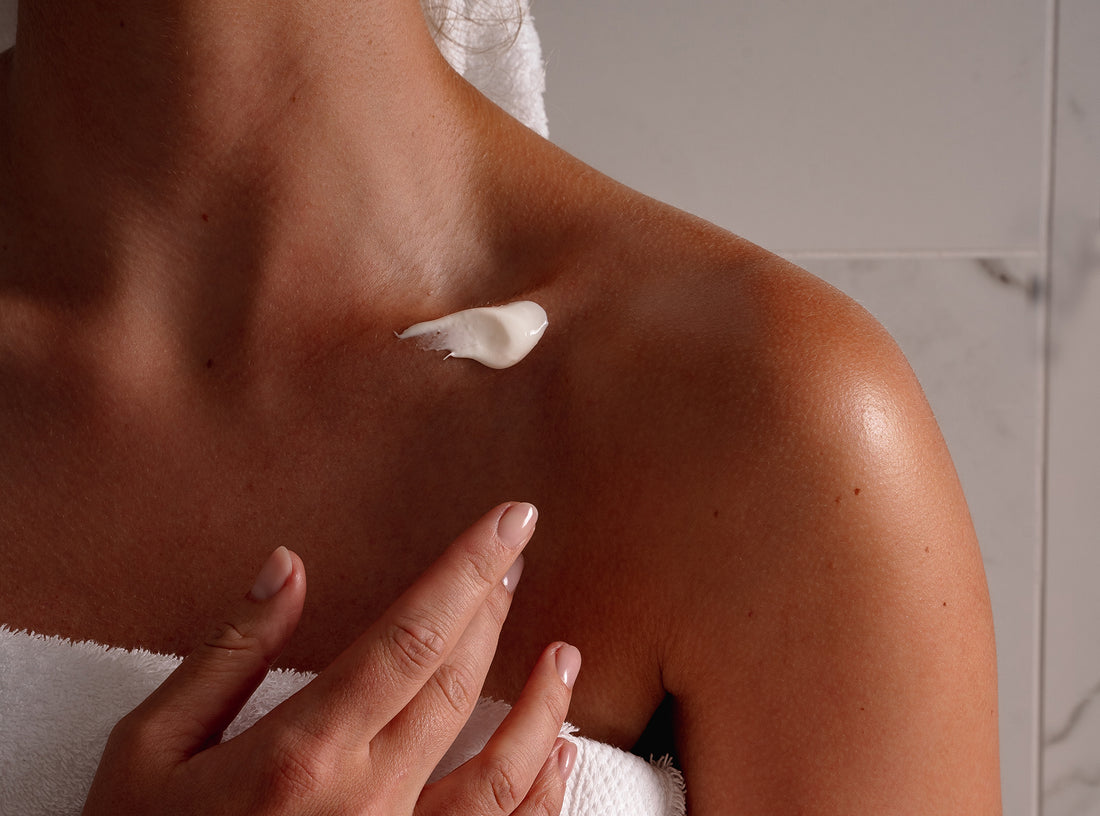
What 3 hormones can affect our skin health?
Share
Throughout our lifetime, our skin changes and for women some of these changes can be down to fluctuating hormone levels. These changes can cause skin concerns during your period, pregnancy and menopause. First, let’s understand what hormones can affect your skin and its health.
Back to basics: what exactly are hormones?
The endocrine glands are responsible for making hormones. The major glands are the thyroid, thymus, adrenal, pituitary, pineal and the pancreas. Hormones travel along your bloodstream to tissues and organs and are your body’s chemical messengers. They are a vital part of some of our most important bodily processes such as metabolism, growth, mood, sexual function and reproduction. Hormones are more powerful than you would expect, it only takes a small amount to affect certain cells and cause changes. They also play a role in skin health, and when there is an imbalance, this can result in certain skin conditions such as acne.
What are the key hormones that affect skin health?
When it comes to our skin there are three hormones that play a role; estrogen, progesterone and testosterone.
- Estrogen – Helps to stimulate the production of elastin, collagen and hyaluronic acid, all of which help to keep your skin plump.
- Progesterone – This hormone affects sebum (oil) production in the skin.
- Testosterone – Works in a similar way to progesterone by activating the glands to produce oil. This hormone typically presents itself during menstruation.
Do men and women have the same hormones?
Generally speaking, yes, but the levels of these hormones and how they interact with the organs, where they are produced, and levels of blood concentration is different. For females, their primary sex hormones are estrogen and progesterone, producing small amounts of testosterone. For men, the primary sex hormone is testosterone, but they also produce small amounts of estrogen and progesterone.
Menstrual Cycle
Most period cycles last for approximately 28 days, during this time your skin is having to deal with fluctuating hormonal levels.
During the start of your cycle, estrogen, progesterone, and testosterone levels are lower. Skin can appear to be drier during this time so make sure you are keeping hydrated and moisturising every morning and evening. Use a gentle exfoliant to remove dead skin cells from the surface of the skin.
Two weeks into your cycle estrogen levels increase and reach their peak level. The estrogen helps to promote healthy cell turnover so by this stage your skin will be looking its most radiant! Keep your skincare regime at its most simplified, no need to overload the skin with products or treatments.
As you go into the third phase of your cycle your estrogen levels will drop and progesterone levels reach their peak, leading to an increase in sebum production. This is the time where your skin may be more prone to breakouts. Use a Cleansing Lotion or Cleansing Balm to help reduce impurities and keep skin nourished.
Just before your period arrives, testosterone comes into production, and this is when you may get the typical ‘period breakout’ associated with this phase. Keep skin cleansed and hydrated to try and keep those pesky pimples at bay.
Pregnancy
During pregnancy, your body will experience a surge in the estrogen and progesterone. Here are some of the changes that may happen to your skin:
- Pigmentation - You may notice your existing freckles darken and, in some cases, dark blemishes may appear on your face. This is called melasma and is sometimes referred to as a “pregnancy mask”. Typically, these patches will fade post pregnancy as your hormones begin to settle.
- Blood vessels - Due to the many blood vessels below the skins surface and increase in blood volume, your cheeks can form a blush as a result. Oil gland secretion increases and that gives your skin a sheen, or what many people would call a “pregnancy glow”.
Menopause
Collagen levels begin to decline from the age of 25 onwards, and as you enter menopause later in life, estrogen levels decrease even further leading to dryness of skin, reduction in skin thickness and wrinkles.
Here are some changes to that may happen to your skin;
- Breakouts – As estrogen decreases, the testosterone levels stay constant leading to breakouts. Keep skin moisturised to prevent an over production of sebum due to the skin drying out.
- Skin pH - After the age of 50, the pH level of our skin is higher. There’s a certain level (5.4) where the pH of our skin allows for the best operation of our microbiome and defensive cells. As the pH climbs, we’re more prone to rashes, sensitivity and dermatitis. Use natural, soothing products that won’t upset the balance of your skin pH.
- Dark spots - Dark spots and hyperpigmentation can also occur, because our skin is thinner and there may have been a lot of sun exposure by the time we reach our 40’s. Years of tanning or burning leave the skin with high levels of melanin, which means it may appear darker in places.
Look for an effective moisturiser during menopause. ishga Anti-oxidant Marine Cream or Hydra+ Marine Cream are rich in texture and will deliver a deep boost of hydration and nourishment.




